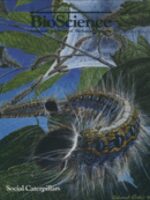Collaborative effort to map 39 forested ecoregions
The Forest Intactness Database was the result of a collaborative effort between the Conservation Biology Institute, theWorld Wildlife Fund U.S., and the World Resources Institute’sGlobal Forest Watch. Using primarily Landsat TM based National Land Cover Data (NLCD) and 1:100,000 scale USGS road data sets, we assessed relative forest intactness for 39 forested ecoregions of the coterminous United States.
Forest intactness was mapped within “landunits” that were defined by highways and urban areas that contained more than 50,000 people. For each landunit, road density was calculated as well as a suite of class and landscape level fragmentation metrics using FRAGSTATS, a spatial analysis software program. For each landunit, road density, class area, percentage of landscape, total core area index, and mean nearest neighbor results were assigned ordinal scores from which a cumulative score was calculated to create an overall relative forest intactness score. By assigning all landunits with a quantitative measurement of relative forest intactness based on a uniform dataset, this study:
(1) Identified remaining relatively intact forest
(2) Identified landunits that may make good restoration candidates from a regional context
(3) Examined forest fragmentation due to roads which has been omitted from other recent national assessments.


